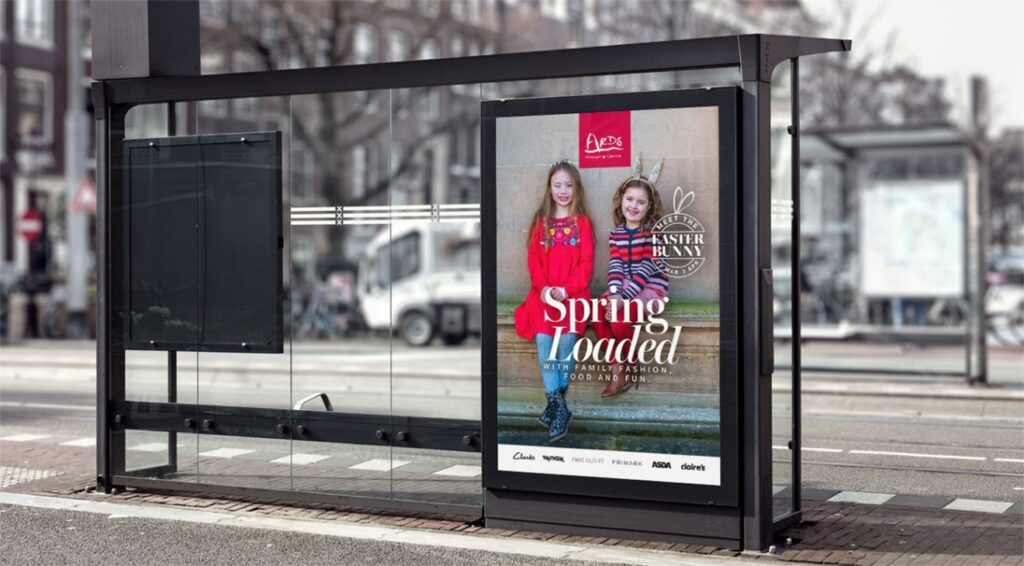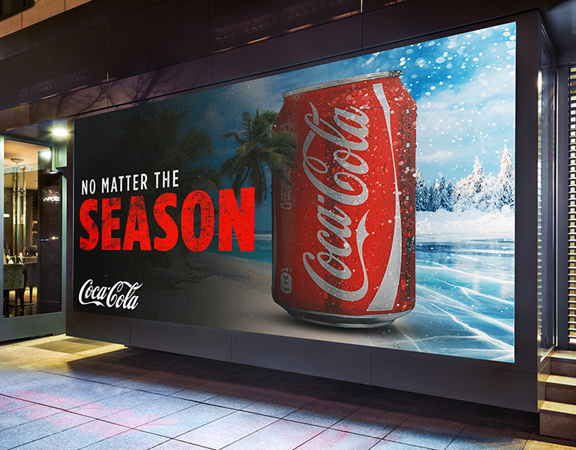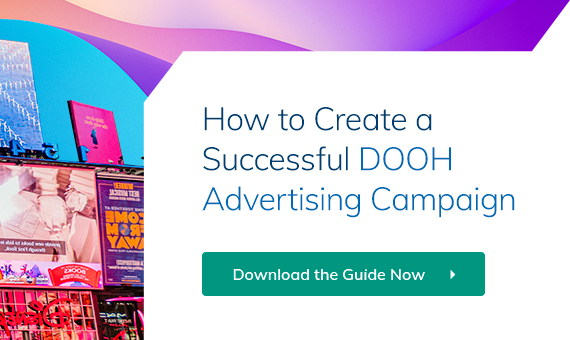Traditional DOOH campaigns relied on static scheduling and inflexible messaging, effective in the past, but outdated in today’s real-time world.
Today’s audience expects messaging that’s not just targeted and personalized, but also timely and context aware.
That’s why programmatic Digital Out of Home (pDOOH) is gaining ground as a core strategy for agencies.
When powered by real-time triggers, pDOOH delivers dynamic, data driven content that adapts instantly to a consumer’s environment – something social and display platforms just cannot replicate.
This blog explores how real-time triggers can supercharge your campaigns by delivering the right message at the right moment and how your agency can stay ahead of the curve by integrating pDOOH into a modern, responsive, marketing mix.
The problem: DOOH has lagged behind in real-time responsiveness
While programmatic display and social media advertising have long embraced real-time personalization, traditional DOOH was slower to evolve, limited by static creatives and delayed updates. This disconnect often left marketers relying on generic, one-size-fits-all messaging that ignored valuable real-world signals like weather, traffic patterns, major events, or even time of day.
For brands with time-sensitive offers, seasonal relevance, or local targeting needs that was not just inefficient, it was a missed opportunity.
But now, with the rise of programmatic DOOH (pDOOH), everything has changed.
Real-time triggers have brought dynamic responsiveness to the medium, allowing DOOH to adapt instantly to external conditions and engage audiences with the right message at precisely the right moment.
The solution. Real-time triggers in pDOOH
Real-time triggers transform DOOH into a responsive medium that reacts to the world as your audience sees it.
By integrating live data feeds into a pDOOH platform, advertisers can dynamically serve content that reflects what’s happening in the world around the viewer.
The real-time triggers that can power your campaigns
Think beyond simple scheduling. Here are some of the most effective real time triggers you can use:
- Weather-based: Switch creative when it rains, snows, or heats up
- Time of day: Reach morning commuters or lunch-break shoppers
- Traffic patterns: Maximize attention during heavy congestion periods
- Footfall data: Deploy ads in areas with rising pedestrian activity
- Location proximity: Serve ads based on closeness to a store, stadium, or venue
- Event triggers: Activate messaging based on sports scores, concerts, or product launches
- Stock or pricing data: Update offers based on availability or flash sales

Image source: walkercommunications.co.uk
By automating these adjustments, pDOOH ensures your creative is always relevant to your audience’s current context, boosting engagement, reducing wasted impressions, and enabling your client’s brand to show up in the right place, at the right time, with the right message.
It’s not just about being seen, it’s about being timely, useful, and memorable in the fleeting moments that matter most.
Why real time triggers matter for marketing agencies
1. Relevance = Engagement
Relevance is the currency of modern marketing. Real-time triggers ensure your message connects with the viewer’s environment both physically and emotionally.
According to Ocean Outdoor, digital out-of-home ads generate 2.5x higher brand recall than static OOH formats, especially when content is adapted to environmental context.
2. Better Performance Metrics
Real time triggers make ads more actionable, memorable and personalized, leading to improved click-throughs, store visits, and conversions.
A recent OAAA-Harris Poll study found that 76% of consumers have taken action, such as searching online or visiting a business after seeing a DOOH ad, making it one of the most behaviorally impactful channels.
3. Operational Efficiency
With automation, you reduce the need for manual updates in DOOH campaigns. Campaigns can be updated instantly across cities, screens, and formats, saving time, reducing waste, and boosting responsiveness.
Implementing real-time triggers in your pDOOH strategy
1. Identify contextual triggers that align with your brand
Not all brands need weather-based triggers. What works for a coffee chain may not apply to a B2B software company. Instead, ask, what real-world moments or conditions make a consumer more likely to buy from us right now?
Focus on the signals that reflect your customer’s mindset, environment, or intent, and use those as the foundation for smarter, more timely messaging.
2. Create modular, dynamic creative
Instead of building one static ad, develop a flexible creative toolkit made up of interchangeable components that can automatically adapt based on real-time triggers. This allows your message to stay fresh, timely, and contextually relevant.
For example:
- Headlines that shift based on weather conditions
- Call-to-actions that adjust according to the time of day or audience behavior
- Background visuals that change to reflect traffic density, location, or even event themes

Image source: behance.net
By planning creative with modularity in mind, you unlock the full potential of pDOOH and ensure your brand stays agile in dynamic environments.
3. Test, learn, optimize
Just as in digital media, optimization is key to maximizing performance.
- Use A/B testing to experiment with different creative variations, trigger types, timing windows, and geographic settings to understand what truly moves the needle.
- Analyze engagement patterns, impressions, and lift in key metrics to refine your approach. With the agility of pDOOH, you can continuously iterate and fine-tune campaigns in near real-time, ensuring you’re not just reaching your audience, but resonating with them.
4. Select a responsive pDOOH platform
Choose a pDOOH platform like The Neuron that supports:
- Real time API integrations
- Multi-screen campaign orchestration
- Mobile or desktop dashboards for monitoring
- Real time performance feedback loops
Use reporting to reallocate spend dynamically.
DOOH as part of your client’s marketing mix
pDOOH isn’t a replacement for your existing marketing channels. Whilst it can, of course, be used as a stand-alone channel, it’s also a high-impact complement that enhances the performance of your broader marketing mix.
Smart agencies are integrating:
- DOOH to drive brand awareness and impulse engagement in high-traffic, real-world environments.
- Digital and social media for retargeting and nurturing interest sparked by physical impressions.
- Search and display to capture demand and reinforce messaging consistency across touchpoints.
- Experiential, mobile, or in-store tactics to close the loop and drive action near the point of sale.
- QR codes, NFC, and geofenced mobile ads to create seamless interactions between physical and digital.
Real-time triggers work across all these channels, so a rain-activated DOOH ad can be instantly mirrored in paid search copy, a mobile push notification, or a display banner, creating a synchronized, omnichannel experience that not only feels, but is, both timely and relevant.

Image source: mmm-online.com
Future Trends in Real-Time pDOOH
As technology continues to evolve, the future of programmatic DOOH lies in even deeper integration with real-time data, predictive intelligence, and interactive capabilities, pushing the boundaries of what’s possible in out-of-home advertising. Emerging innovations are already shaping what’s next:
- AI-triggered ads using predictive models to anticipate consumer demand before it happens
- Voice and motion interactivity with smart screens that respond to passerby engagement
- Integration with wearables or connected vehicles for hyper-personalized, location-aware messaging
- Sustainability triggers such as powering down screens during low footfall to reduce energy use
As the ecosystem grows, expect real-time data to power even more immersive, efficient, and personalized brand experiences, blurring the lines between physical and digital like never before.
Real-time pDOOH is the future of smart advertising
pDOOH powered by real-time triggers is no longer experimental, it’s essential.
It helps overcome the static limitations of traditional DOOH while offering the automation and targeting that digital marketers demand.
Whether you’re running hyperlocal campaigns for retailers or global promotions for brand awareness, real-time data lets you deliver the right message, in the right place, at the right time.
Final takeaways for marketing agencies
- Real-time triggers increase message relevance and performance
- The triggers make campaigns more agile, localized, and efficient
- Platforms like The Neuron make implementation scalable and simple
Now is the time to test and scale real-time pDOOH before your competitors do.
The Neuron. Making real-time triggers accessible
The Neuron is a pDOOH platform, designed for real-time integration and campaign automation.
What makes our platform unique is its plug-and-play real-time trigger system, allowing marketers to:
- Sync campaigns with weather, event and time-based APIs
- Run hyperlocal creative variations across 1.1 million global DOOH screens
- View and adjust performance through a clean, real-time dashboard
The platform eliminates technical complexity, offering agency marketers an integrated experience for physical ad spaces.
Talk to The Neuron today and maximize your results with real-time triggers and programmatic DOOH precision.

